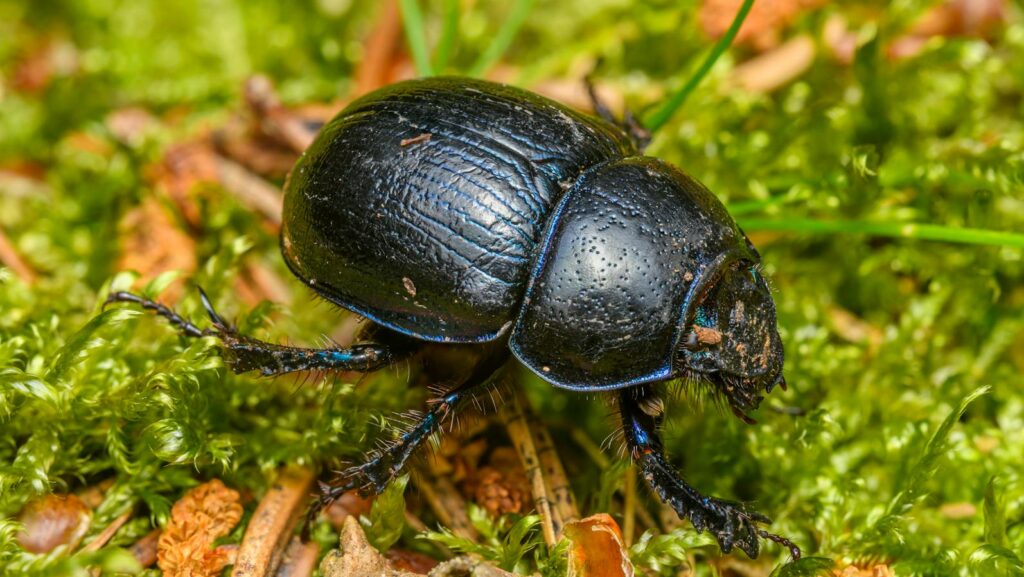
In the vast African savanna, under the canopy of a starlit sky, a small but remarkable creature embarks on a nightly mission. The dung beetle, often overlooked and underappreciated, performs one of nature’s most fascinating feats of navigation. These industrious insects collect fresh animal dung, shape it into balls, and roll these treasures away from competitors—all while navigating with incredible precision by reading celestial cues in the night sky. Their ability to use the stars for orientation represents one of the animal kingdom’s most sophisticated navigation systems, packed into a brain smaller than a grain of rice. From the Milky Way to polarized moonlight, dung beetles demonstrate that cosmic navigation isn’t reserved for humans with their advanced technology—it’s been mastered by tiny beetles with compound eyes and miniature brains, offering profound insights into the evolution of celestial navigation across species.
The Resourceful Recyclers of the Insect World

Dung beetles belong to the superfamily Scarabaeoidea, with over 7,000 species distributed across every continent except Antarctica. Their ecological importance cannot be overstated—these insects are nature’s recycling specialists, breaking down animal waste that would otherwise accumulate, spread disease, and release greenhouse gases. A single dung beetle can bury dung containing parasite eggs, effectively preventing up to 80% of livestock parasites from developing. Their waste management services save the cattle industry in the United States alone an estimated $380 million annually. Beyond their practical benefits, dung beetles have captured human attention for millennia, with ancient Egyptians revering the scarab beetle as sacred, associating it with resurrection and transformation.
The Fascinating Life of Ball Rollers
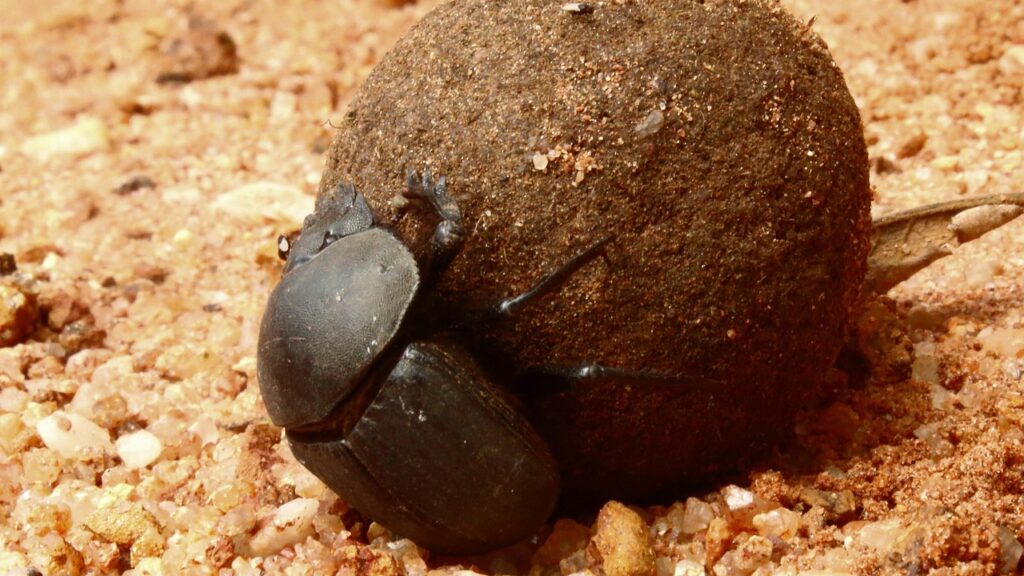
The dung beetles most famous for celestial navigation are the “rollers”—species that craft dung into spherical balls and roll them away from the dung pile. This behavior serves multiple purposes: securing food, providing nesting material, and attracting potential mates. A male roller can create a dung ball weighing up to 50 times its body weight, rolling it backward with its hind legs while effectively standing on its head. Once a suitable location is found, the beetle buries the ball underground where it may consume it or, in the case of breeding pairs, use it as a brood ball in which the female lays a single egg. The developing larva will live inside this nutritious enclosure, consuming it from the inside out until emerging as an adult beetle ready to continue the cycle.
The Challenge of the Straight-Line Path
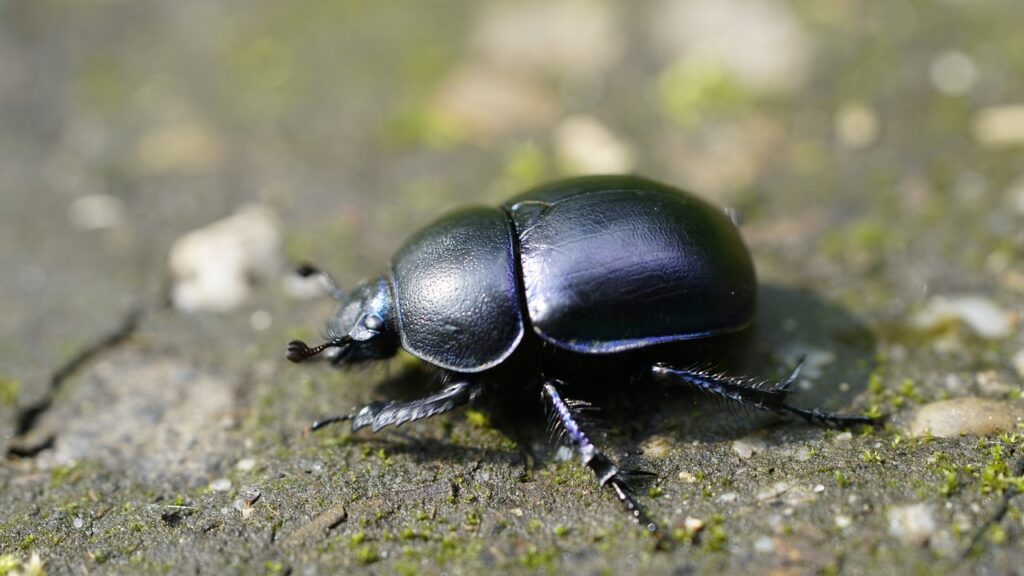
The journey from dung pile to burial site presents a significant navigational challenge for the dung beetle. To maximize efficiency and minimize the risk of theft from competitor beetles, rollers must travel in the straightest possible line away from the source. Moving in a straight line is actually one of nature’s most difficult feats, requiring constant orientation and course correction. For context, humans blindfolded and asked to walk in a straight line typically wander in circles. Dung beetles overcome this challenge through remarkable adaptations allowing them to maintain heading by reading the sky above. Their straight-line efficiency was what first alerted researchers to the possibility that these insects were using celestial navigation rather than merely following scent trails or ground-based landmarks.
Moonlight Navigation: The First Clue

Scientists began unraveling the mystery of dung beetle navigation in the early 2000s, when researchers in South Africa noticed that the insects seemed to navigate more effectively on moonlit nights. Controlled experiments confirmed that beetles used the moon as a celestial reference point to maintain their straight-line course. By reflecting light off mirrors to create artificial “moons,” researchers could manipulate the beetles’ directional choices, causing them to change course when the apparent position of the moon shifted. Even more impressive was the discovery that dung beetles could navigate using polarized moonlight—light waves that vibrate in a specific orientation after being scattered by our atmosphere. This ability allows the beetles to orient themselves even when the moon is not directly visible but its scattered light creates patterns in the sky perceptible to their specialized eyes.
Stargazers with Compound Eyes

The most groundbreaking discovery came in 2013 when a team led by Dr. Marie Dacke of Lund University in Sweden demonstrated that dung beetles can navigate using the pattern of stars in the Milky Way. This research, conducted in South Africa’s Johannesburg Planetarium, showed that beetles could maintain straight paths even on moonless nights when only the stars were visible. When fitted with tiny cardboard hats that blocked their view of the sky, the beetles’ paths became random and circuitous. Most remarkably, when tested under a planetarium sky showing only the diffuse band of the Milky Way (without individual bright stars), the beetles successfully maintained their heading—proving they weren’t focusing on specific stars but rather using the gradient of light created by our galaxy. This discovery made dung beetles the first insects, and the first non-bird animals, proven to orient themselves using the galaxy.
The Dung Beetle Dance: Orientation Through Movement
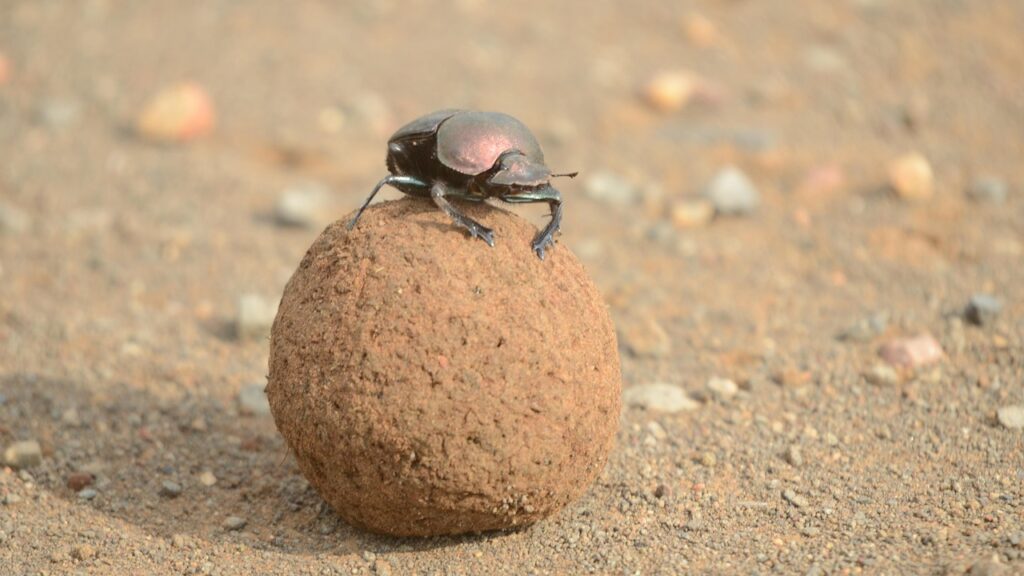
Before embarking on their straight-line journeys, dung beetles perform a curious behavior that scientists have dubbed the “dance of orientation.” Upon forming a dung ball, the beetle climbs atop it and rotates in place, seemingly taking celestial readings before choosing a direction. High-speed camera recordings reveal that during this dance, the beetle pauses at intervals, scanning the sky to create a mental snapshot of celestial cues. This orientation dance becomes longer and more elaborate when celestial conditions are challenging—such as on partially cloudy nights or when celestial cues are limited. The dance represents a sophisticated calibration behavior that allows the beetle to establish its initial bearing before beginning its journey, demonstrating remarkable adaptability to varying sky conditions and navigational challenges.
The Beetle’s Astronomical Toolkit
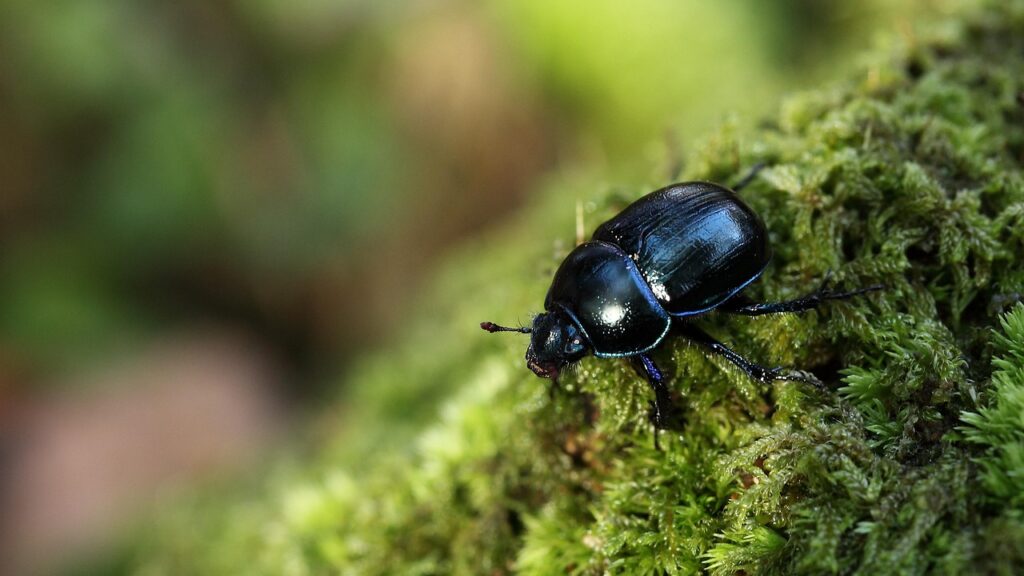
Dung beetles possess specialized anatomical features that enable their astronomical prowess. Their compound eyes contain specialized photoreceptors sensitive to polarized light patterns in the sky, allowing them to detect subtle light gradients invisible to humans. These receptors are arranged in a dorsal rim area, a specialized region found in many insect navigators including bees and monarch butterflies. Neurological studies have revealed that dung beetles have dedicated neural pathways that process polarized light information and celestial orientation cues. Unlike some insects that use the sun’s position as a compass reference and must compensate for its movement over time, dung beetles take instantaneous “snapshots” of the sky during their orientation dance, using that fixed image as a reference point for their relatively short journeys—an elegant solution that doesn’t require complex time compensation mechanisms.
Temperature Regulation: Cooling Off on the Cosmic Highway
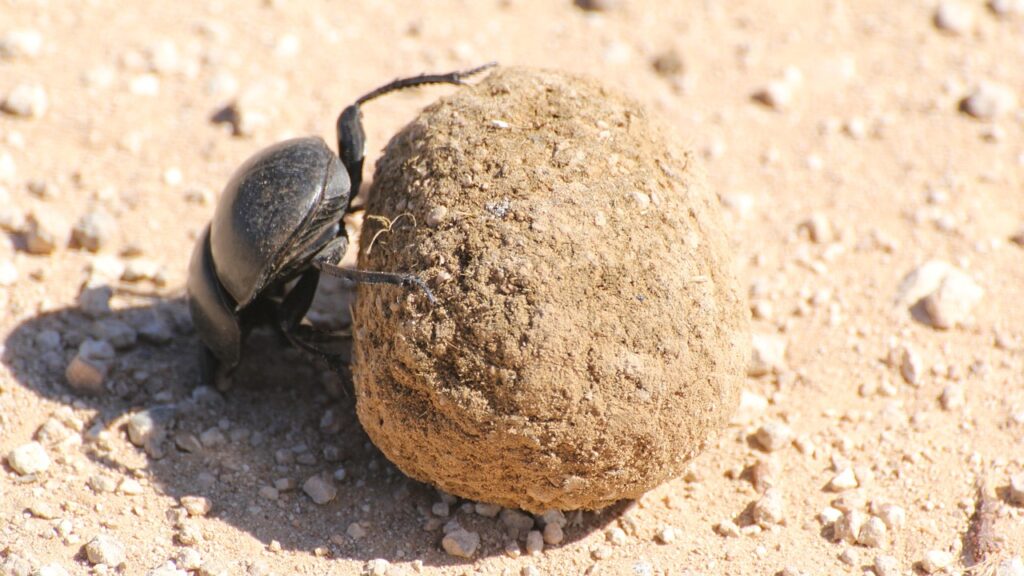
Recent research has revealed another fascinating aspect of dung beetle behavior connected to their celestial navigation: thermoregulation. The African savanna can reach scorching temperatures, with sand surfaces exceeding 140°F (60°C)—hot enough to damage the beetles’ delicate tissues. Scientists discovered that dung beetles occasionally climb atop their dung balls not just for orientation but also to cool their bodies. Thermal imaging shows that during these “cooling breaks,” a beetle’s body temperature can drop by up to 7°F (4°C) within seconds. This cooling behavior is more frequent during midday heat and on particularly hot surfaces, showing a sophisticated behavioral adaptation to harsh environments. Remarkably, even during these cooling breaks, beetles maintain awareness of their established heading using celestial cues, allowing them to continue their journey in the correct direction after cooling down.
Experimenting with Beetle Navigation

Scientists have developed increasingly creative experiments to test the limits of dung beetle navigation capabilities. In one elegant study, researchers fitted beetles with custom-made caps that either completely blocked their view of the sky or allowed it through transparent material. When sky-blind, the beetles wandered aimlessly; with vision restored, they immediately oriented correctly. In another experiment, beetles were placed in a planetarium where researchers could control which celestial features appeared, isolating variables like the Milky Way, individual bright stars, or polarization patterns. Perhaps most ingeniously, some beetles were fitted with tiny boots made of silicone—not to study navigation directly, but to protect their feet while researchers tested how surface temperature affected their rolling behavior and navigational pauses. These experiments showcase both the remarkable abilities of the beetles and the imaginative approaches scientists use to understand them.
Evolution of Celestial Navigation in Insects
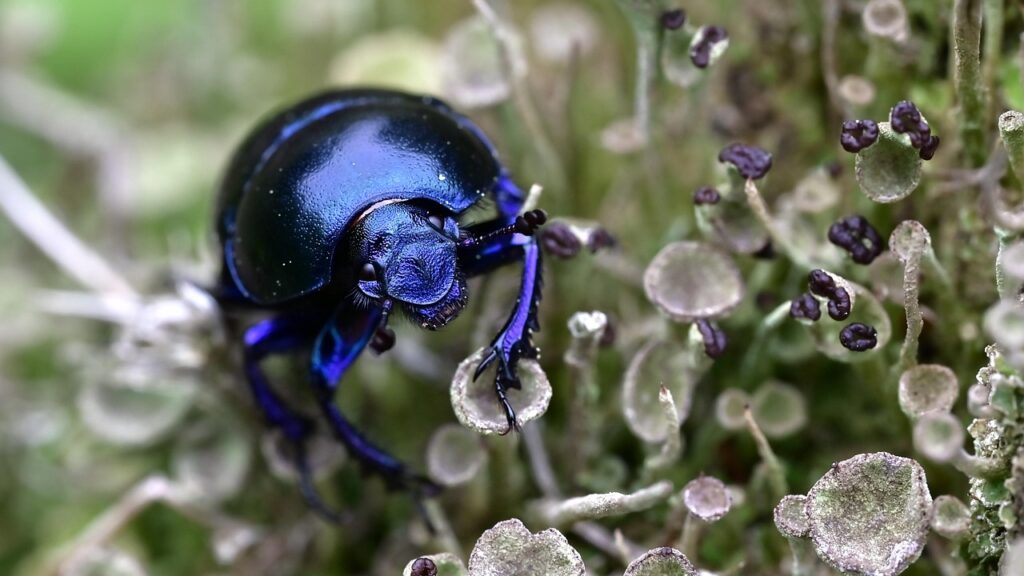
The evolutionary path that led to dung beetles’ astronomical abilities represents millions of years of natural selection. Celestial navigation appears independently across many insect lineages, suggesting its tremendous adaptive value. Fossil evidence indicates dung beetles have been recycling mammalian waste since the age of dinosaurs, with their navigational abilities likely developing as competition for dung resources intensified. Comparative studies across beetle species reveal varying degrees of celestial navigation skills, with species from open habitats typically showing more sophisticated abilities than those from forested environments where the sky is less visible. This pattern supports the hypothesis that celestial navigation evolved as a response to specific ecological pressures rather than appearing suddenly in the lineage. The relatively simple neural architecture supporting this complex behavior provides valuable insights into how sophisticated navigational systems can evolve without requiring large brains.
Human Applications of Beetle Astronomy

The study of dung beetle navigation has inspired innovations in several fields, particularly robotics and artificial intelligence. Engineers have developed algorithms based on dung beetle orientation methods to create more efficient navigation systems for autonomous vehicles and drones, especially in GPS-denied environments. These “beetle algorithms” are particularly valuable for their energy efficiency and ability to function with minimal computational resources. Military researchers have explored applications for navigation systems that, like the beetle’s, can function using passive celestial cues rather than active signals that might be jammed or detected. In agriculture, understanding beetle navigation has improved trap designs for pest management and informed the development of more effective beetle distribution programs for sustainable waste management in livestock operations.
Conservation Challenges and Climate Change Impacts

Despite their ecological importance, many dung beetle species face significant conservation challenges. Habitat loss, the widespread use of veterinary pharmaceuticals that make livestock dung toxic to beetles, and the decline of large mammal populations all threaten these important insects. Light pollution presents a particular concern for celestial navigators, as artificial light drowns out the natural sky cues beetles rely upon. Research indicates that beetles near urban areas show compromised navigation abilities, with consequences for their reproductive success and population stability. Climate change adds another layer of threat, as increasing temperatures and shifting rainfall patterns alter the timing and consistency of dung availability. Conservation efforts specifically targeting dung beetles include reducing unnecessary artificial lighting, creating beetle-friendly corridors between protected areas, and adjusting livestock medication protocols to minimize harm to these essential ecosystem engineers.
Tiny Brains, Cosmic Understanding
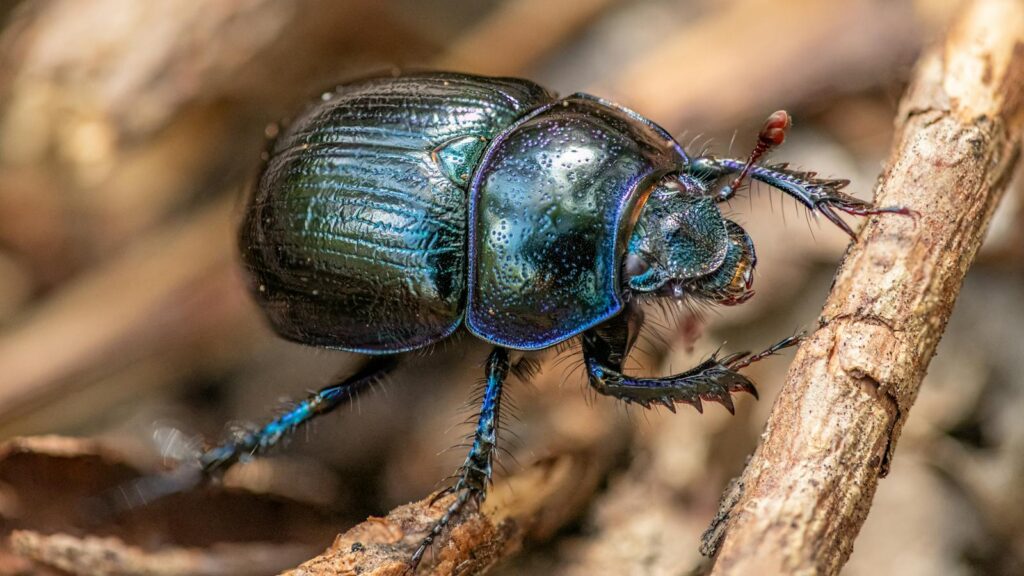
Perhaps the most profound aspect of dung beetle navigation is what it reveals about the relationship between brain size and cognitive capability. Dung beetle brains contain fewer than one million neurons—compared to roughly 86 billion in human brains—yet they accomplish astronomical feats that humans only mastered with advanced technology. Their specialized neural circuits demonstrate nature’s elegant efficiency in solving complex problems with minimal resources. Neurobiological research suggests that rather than “thinking” about navigation as humans do, beetles possess dedicated neural pathways that process celestial information automatically, much like how our own brainstems regulate breathing without conscious thought. This perspective challenges our anthropocentric notions about intelligence and cognition, suggesting that specialized intelligence can emerge through evolutionary processes without requiring large, generalized brains.
As we continue to unravel the mysteries of how dung beetles read the night sky, we gain not only scientific knowledge but also a profound appreciation for the unexpected sophistication of seemingly simple creatures. These humble insects remind us that the ability to look up at the stars and find meaning is not uniquely human—it’s a skill shared across the tree of life, expressed in different forms but unified by the same cosmic canvas overhead. In the dung beetle’s celestial journey, rolling its precious cargo across the savanna under starlight, we find a beautiful reminder of how all living things on Earth exist in relationship with the cosmos, each finding their own way of reading the stars.
